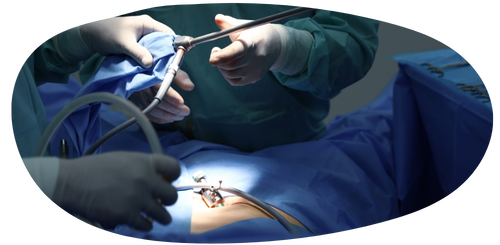At Eva IVF & Women’s Centre, we understand how frustrating it can be to struggle with ovulation issues due to Polycystic Ovarian Syndrome (PCOS). When medications fail to stimulate ovulation, Laparoscopic Ovarian Drilling (LOD), also known as PCOD Drilling, offers a minimally invasive surgical solution to restore natural ovulation and improve fertility outcomes.
This guide is tailored for women diagnosed with PCOS who are considering surgical intervention to boost their chances of natural conception. We’ll explain the procedure, who benefits from it, success rates, risks, and post-operative care to help you make a confident, informed decision.
What is Laparoscopic PCOD Drilling?
Laparoscopic Ovarian Drilling (LOD) is a keyhole surgical procedure designed to trigger regular ovulation in women with PCOS who are not responding to medications like Clomiphene Citrate or Letrozole. Using a laparoscope and specialized tools, small punctures are made on the ovarian surface to reduce excess androgen-producing tissue, which often disrupts hormonal balance and ovulation in PCOS.
💡 This minimally invasive technique restores ovulatory cycles, helping many women conceive naturally after the procedure.

Who Should Consider Laparoscopic Ovarian Drilling?

LOD is recommended for:
✔ Women with PCOS who are anovulatory (not ovulating regularly)
✔ Women who have not responded to first-line ovulation induction medications
✔ Those who want to avoid the risks of ovarian hyperstimulation associated with hormonal injections
✔ Women planning IVF who need hormonal balance before stimulation
✔ Women experiencing elevated levels of androgens (male hormones) contributing to acne, hirsutism, or irregular cycles
How Does LOD Work? (Step-by-Step Process)
✔ Hormonal assessment, ultrasound scans, and a complete medical review
✔ Discussion of alternative options and confirmation of eligibility for surgery
✔ Performed as day-care surgery under short general anesthesia
✔ A small incision is made near the navel, and a laparoscope (camera) is inserted
✔ Carbon dioxide gas inflates the abdomen for a clear view of the pelvic organs
✔ Using electrocautery or a laser, the surgeon makes 4 to 10 small punctures on each ovary
✔ This reduces androgen-producing stroma, which helps restore hormonal balance and ovulation
✔ Instruments are removed, and incisions are closed with minimal scarring and patients can go home the same day with follow-up instructions.
💡 The goal is to restart natural ovulation, often within 4 to 6 weeks after the surgery.
Benefits of Laparoscopic PCOD Drilling
🌟 Restores Natural Ovulation in 60–80% of Women
🌟 Reduces Levels of Male Hormones (Androgens) – improving skin, hair, and hormonal balance
🌟 Improves Menstrual Regularity – bringing back predictable cycles
🌟 Enhances Response to Ovulation Medications in Future Treatments
💡 Unlike medications, LOD targets the root cause of hormonal imbalance in PCOS, offering long-term benefits for selected patients.
Success Rates of LOD in PCOS-Related Infertility
✔ 70-80% of women ovulate within 2-3 months post-procedure
✔ 50-60% of women achieve pregnancy naturally within 6-12 months
✔ Reduces need for high-dose fertility drugs in future IVF cycles
✔ Improves live birth rates, especially in women resistant to Clomiphene Citrate
💡 The highest success is seen in younger women with normal body weight and short duration of infertility.
Risks & Considerations
Although safe and minimally invasive, potential risks include:
⚠️ Formation of adhesions (scar tissue) around the ovaries
⚠️ Reduced ovarian reserve if excessive drilling is performed
⚠️ Infection or bleeding, though rare
⚠️ No guarantee of ovulation in all cases
💡 Choosing an experienced surgeon and a fertility centre like Eva IVF ensures precision and reduced complications.
Postoperative Care
✔ Recovery Time: Most women return to normal activity within 2-3 days
✔ Follow-Up Visit: Typically scheduled within a week for stitch removal and review
✔ Ovulation Monitoring: Begins 4-6 weeks post-surgery using blood tests and ultrasound
✔ Natural Conception: Encouraged for up to 6 months post-LOD before moving to ART
✔ Healthy Lifestyle: A PCOS-friendly diet and weight management can further boost ovulation success
Why Choose Eva IVF & Women’s Centre for PCOD Drilling?
Our team is committed to providing personalized care and long-term fertility planning for women with PCOS.
